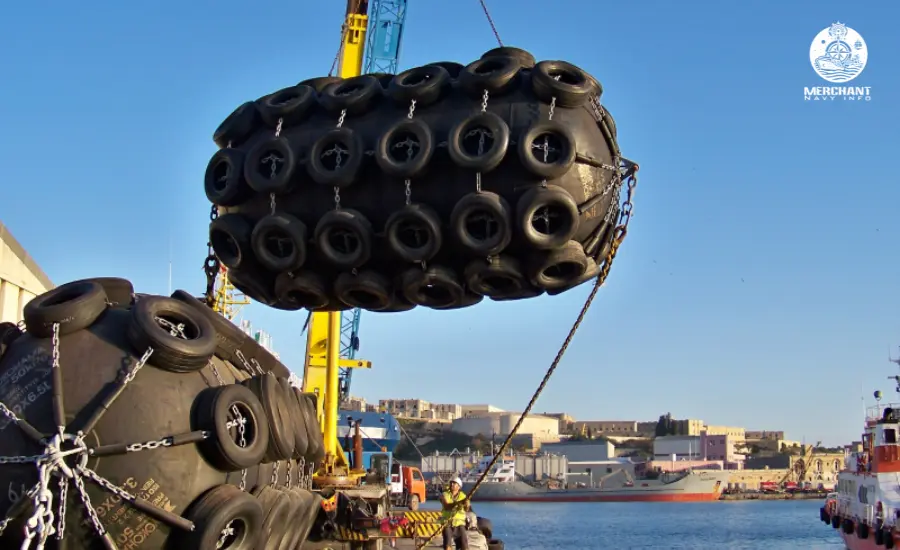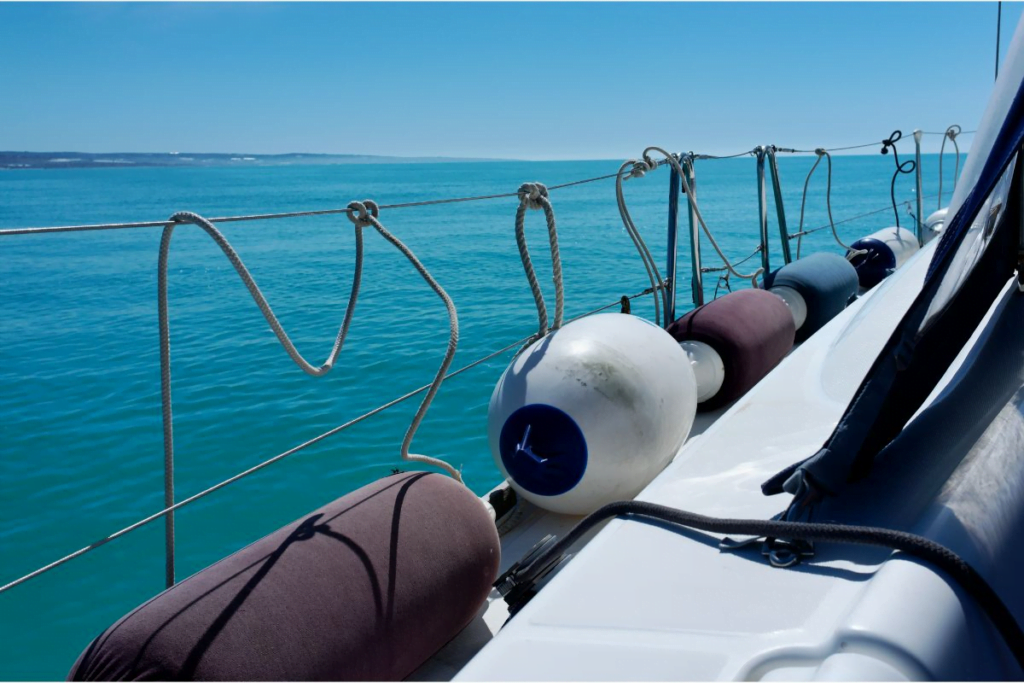
The fender ship are marine equipment specifically designed to protect ports and also ships from collisions with other ships. This is a special device designed to provide a buffering effect when ships, boats, and also other naval vessels collide with other vessels, piers, piers, ports, and berths. These are also called marine bumpers. Marine fenders are a certain type of marine equipment used to prevent boats, ships, and other vessels from colliding with each other or against docks, piers, and also piers. In other words, marine fenders are sometimes simply called marine bumpers.
Marine fenders are important marine equipment to prevent the loss of boats and also hulls. Fender systems used on naval vessels have continually evolved over time and also are now designed to ensure that the prevention process is virtually error-free and reliable. Marine fenders are currently used to attach to the hull or bow of a boat or ship to prevent damage to the hull or bow of a naval vessel in the event of a boat-to-boat collision. At the same time,types of fenders for ships are also permanently used on piers, docks, piers, and also other normal entrances and exits for boats.
Marine Fender

This marine fender is suitable because in the event of a high volume of boat traffic passing from a particular shipyard and also an accident or collision occurs, damage to both the boats and the shipyard is greatly minimized. Permanent installation will help. The Fender system is designed to protect all vehicles from accidental damage. When it comes to marine fenders, marine equipment is one of the very greatest technological advancements to date. Fender systems have been used for centuries to prevent damage to the hulls of naval vessels, but the concepts and also ideas have evolved further in modern times than in the past. Innovation and successful implementation have resulted in the availability of a wide variety of marine Fender systems that serve as superior marine equipment.
Classification of Marine Fenders

Types of fenders for ships depend on the installation location and manufacturing material. Based on Material Based on Material, the different types of boat bumpers available in the market are:
- Rubber Fender
- Foam Fender
- Composite Fender
1. Rubber Fender:
Rubber Fender Many variations have been developed to suit different applications. These types of fenders for ships were designed according to PIANC’s basic principles. Rubber fenders reduce input reaction forces and also provide necessary hull pressure angle guidance. These are the types of fenders for ships with the highest demand in the market. These fenders are also having a positive impact on the rubber industry around the world. Over the past decade, the rubber industry has seen significant progress and growth due to the marine utilization of rubber. There are many types of rubber fenders manufactured by different transportation supply companies, and also they are listed below:
a. Super Cone Fender:
This is the latest type of rubber fender and is also commonly It’s called a “cone fender.” The conical body of the cone fender provides stability even at higher compression angles. They are highly efficient and provide optimal performance. Excellent resistance to shear and excessive compression. Its shape plays an important role in stability. Currently, rubber compounds are widely used in the marine industry and are often used to make cone fenders.
b. SCK Cell Fender:
The simple design of these fenders is the main reason for their popularity. It is a high-performance Fender with excellent strength. These cell fenders come in a variety of sizes and can support large panels. These self-fenders are ideal for systems operating at low heights on the hull.
c. Bow fender:
Types of fenders for ships are used to provide assistance and support to a type of marine fender called a cylindrical fender. Bow fenders are one of the best marine equipment and fender systems because they require absolutely no maintenance. Bow fenders can be used on small to medium-sized vessels and boats and offer superior quality. These fenders are suitable when a sturdy marine fender system is required. These are extremely reliable fenders that serve their purpose admirably, even under the harshest conditions. These make installation easy. Excellent wear resistance and shear resistance. When these fenders are installed at the corners of the port, they are called corner arch fenders.
d. Leg Guard:
The modular design makes the guard easy to install. The main advantage of these fenders is that they require little to no maintenance. Leg guards are primarily used where the mounting area is limited.
2. Molded Fender
The structure of this fender is a closed-cell double layer structure. The foam fender’s inner core is made of polyethylene foam, and a reinforced polyurethane elastomer is used to cover that core. With this type of fender, water intrusion is almost zero. They function uninterrupted throughout their lifetime, even if damaged. There are different types of foam fenders:
a. Sea-Guard fenders:
These are suitable for both floating and floating conditions. Such fenders can be used both on ships and in ports and are easy to maintain. These fenders are primarily used in ship-to-ship operations and cannot be destroyed or destroyed. These fenders don’t sink easily and don’t deflate. Most foam fenders are manufactured according to the U.S.
b. Sea Cushion Fenders:
These are rough and sturdy fenders. A floating fender intended for use under the harshest conditions. The core used in manufacturing is of higher quality than Sea-Guard fenders. It features a network of hardcore truck tires that act as a waterproof cushion that won’t sink. These are the most reliable and efficient foam fenders for LNG ships and require minimal maintenance. It is used on LNG carriers because it does not burst.
c. Donut fender:
This is a special type of marine fender and also a type of berth fender used as a guide or turning structure. These fenders have rotating tubular posts to adjust the ship’s position. These are made of nylon filament reinforced with polyurethane skin. These are available in bright colors for easy access. Since it is a fender type, maintenance is not required.
3. Composite Fenders
These are fenders that can be made of any composite material. All types of tractor fenders are included in this category.
a. Tugboat fenders:
These are the only marine fenders installed on tugboats. These fenders are exposed to maximum wear and tear, so they are made from the toughest materials that can withstand the higher levels of wear and tear that ships are subjected to from water currents and other vessels. This increases the service life of the Fender and provides maximum efficiency. Depending on the geometric characteristics, fenders can be cylindrical, conical, keyhole, M, or W-shaped. These are all marine fenders that are somewhat similar to each other, differing only in their geometric design. All of these tug fenders are made from durable materials to withstand wear and tear from other vessels and water currents. All of these fenders are sturdy fenders, and their different designs allow them to work efficiently in different situations. Based on the mounting position.
Based On Fender’s Position

There are two types.
1. Ship fenders:
These are fenders installed on ships to increase clearance during ship-to-ship transfers. Tractor fenders fall into this category. Because ship fenders are exposed to more severe conditions than dock fenders, these fenders must be made of stronger materials than those used for dock fenders.
2. Dock fender:
A dock fender is a fender installed in a port to protect ships and docks when moored. Examples of these types of fenders include leg fenders and parallel flow fenders. All of these fenders primarily absorb large amounts of kinetic energy to minimize the impact experienced by docks and ships and avoid damage to cargo and crew.
W Fender:
This type of marine fender is mainly used to support large ships and boats, as it provides high resistance and can better protect the vessel in the event of an accident. Other types of ship fenders include I fender, self fender, cone fender, and pneumatic fender, along with three other ship fenders, which are very practical for naval ship accidents and collision problems and help provide solutions.
Precautions When Working On Marine Fenders

Fender ship need a certain degree of softness to absorb kinetic energy and thrust efficiently, but they also need to be hard enough to withstand impacts. fender ship shall not burst during operation. To ensure maximum safety, appropriate repair and maintenance work must be carried out. Having a shipping conglomerate is very important, but equally important are the precautions taken to protect naval vessels in the event of a collision. Therefore, installing a fender system on your boat or ship is the best idea and safety procedure that can be used not only effectively but also productively.










